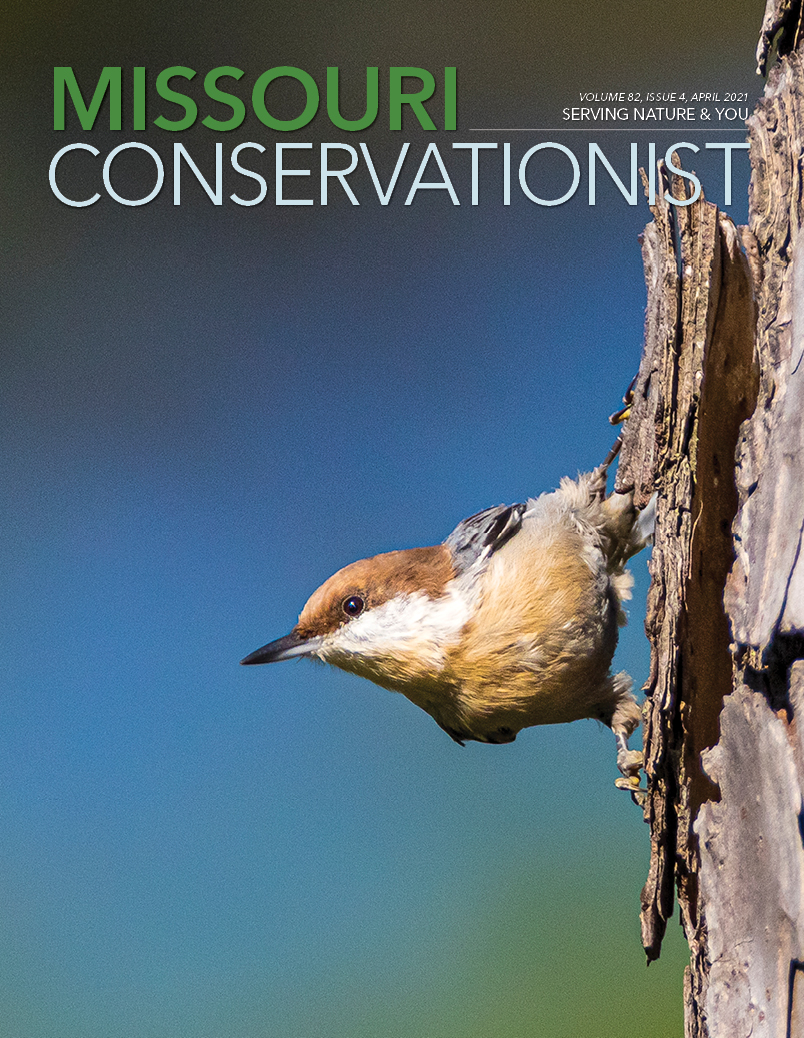Each month, we highlight research MDC uses to improve fish, forest, and wildlife management.
Assessing Species Distribution
Spotted Skunks and Gray Foxes
“Spotted skunks and gray foxes can be difficult to find,” said Hannah Warner, a graduate research assistant with the University of Missouri School of Natural Resources. She leads the field work for a study currently underway in Missouri’s Ozark region. “But,” she said, “with the right kind of bait, like sardines or a predator lure, you might get lucky and capture one on your trail camera.”
The study started in 2020, after the U.S. Fish and Wildlife Service (USFWS) received a petition to add the plains spotted skunk and the prairie gray fox to the endangered species list in 2012.
“This study will provide additional and more up-to-date information on the status of both species, which will help inform listing and management decisions,” Warner said.
Warner’s team is using game cameras to detect spotted skunks and gray foxes, as well as other mesocarnivores, including raccoons, opossums, coyotes, and bobcats. Mesocarnivores mostly eat meat, but they also forage for fungi, fruits, and other plant material.
Warner’s team also evaluated the habitat surrounding each game camera. They measured area size and composition, canopy cover and species of trees, as well as available denning cover. “These measurements will help us better understand the species’ relationship to habitat at different spatial scales, which could help us identify distribution patterns,” Warner said.
In addition to providing current information for USFWS use, it will help MDC furbearer staff develop protocols to monitor species distribution and status, as well as habitat management effects on spotted skunks, gray foxes, and other mesocarnivores in the Missouri Ozarks.
Spotted Skunk and Gray Fox Study at a Glance
Purpose and Study Area
Assess spotted skunk, gray fox, and other mesocarnivore presence, distribution, and habitat relationships
MDC’s Research Partners
- University of Missouri
- U.S. Fish and Wildlife Service
- Kansas City Zoo
Methods
- Set up game cameras and baits/lures in study area in winter
- Monitor camera footage
- Assess habitat at different sites and scales
- Analyze presence and habitat data using occupancy models
Milestones to Date
- 400 study sites established
- Thousands of mesocarnivore and other species images captured
Management Applications
- Inform USFWS decisions related to the status of plains spotted skunk and prairie gray fox
- Help MDC monitor the status of both species
- Help furbearer staff develop monitoring protocols for species distribution, status, and habitat management
And More...
This Issue's Staff
Editor - Angie Daly Morfeld
Associate Editor - Larry Archer
Staff Writer - Bonnie Chasteen
Staff Writer - Kristie Hilgedick
Staff Writer - Joe Jerek
Art Director - Cliff White
Designer - Shawn Carey
Designer - Marci Porter
Photographer - Noppadol Paothong
Photographer - David Stonner
Circulation - Laura Scheuler






















